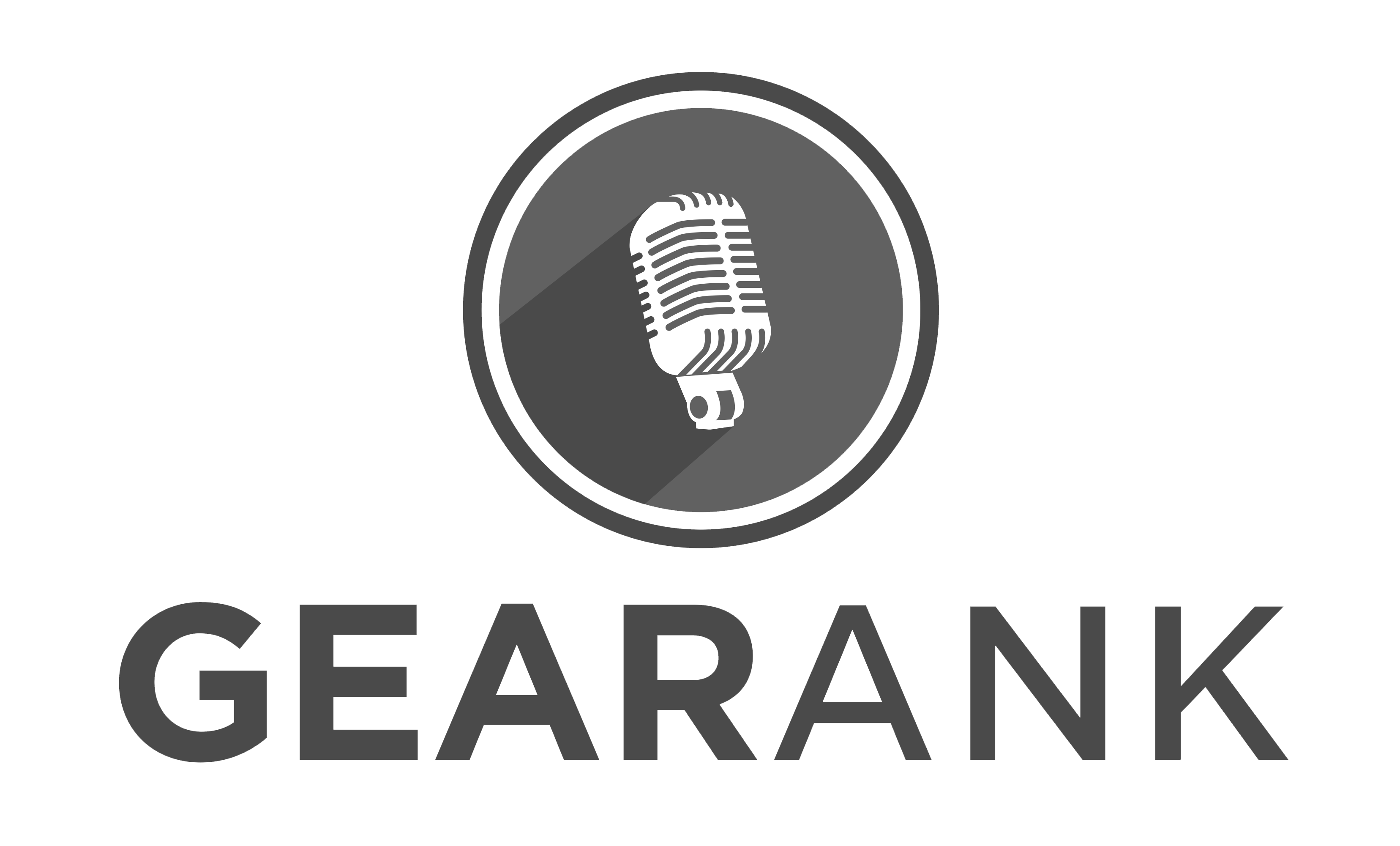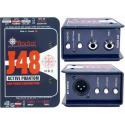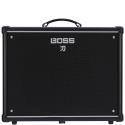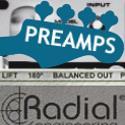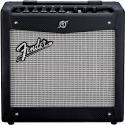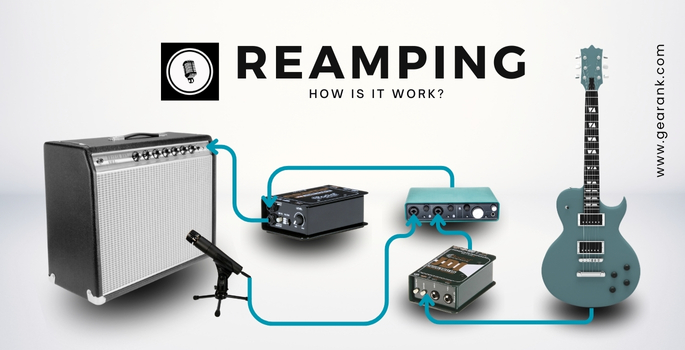
Reamp or re-amping is a step in the audio recording process after capturing an audio recording. It gives an audio engineer the freedom to try different amps and effects onto a clean signal.
Due to the flexibility it brings, reamping has become a popular post-recording process. It is now widely used to produce high-quality audio in modern recording studios and is especially loved by guitarists.
In this article, I will delve into the subject of reamping. Why it’s a crucial part of the recording process, and explain why you should consider using it in your own recording studio setup.
With this technique, you will be able to give your recordings a new, cleaner, and more accurate feel.
What is a Reamp?
Reamp, or simply reamping, is a process of re-using and improving already recorded tracks. After recording a dry audio signal via an audio interface, it can be pulled out by a reamp device for modification by applying different amp types, mic positions, effects, and more.
A reamp device features a level control to adjust the signal going into the amp or effects pedals. Because it involves physical equipment, it’s easier to make adjustments. In addition to that, reamping also allows for effect manipulation without worrying about affecting your main recorded track.
Modern plugins within DAWs can also do virtual reamping. Utilizing digital amp emulations, effect pedals, and micing options. Still, some professionals prefer reamping with genuine hardware to achieve a more organic sound. You’ll need active reamp boxes to accomplish this.
How Does Re-amping Work?
Re-amping works by taking the balanced line-level signal coming from an audio interface or mixer. Then, it’s converted into an unbalanced instrument-level reamped signal. It is a signal compatible with the input of a guitar amp or outboard effects.
Let’s assume that you’re recording a guitar sound. Here are the steps for reamping an audio recording:
Step 1: Get your materials ready. To record your main track, you need an instrument, a DI box or direct box, and an audio interface. For reamping, you’ll need a reamp box, a guitar amp, and guitar effects.
Step 2: Record your dry and unprocessed guitar signal. Connect your instrument to a DI box and then connect the DI box to the audio interface through its output.
Record your instrument on the audio interface. Keep the signal as dry as possible at this stage. It is ideal to have a clean audio signal for later processing or the addition of any effects.
Step 3: After recording, create a new track for your reamped signal. Send your recorded audio to the reamp box through the output of the interface, then into your amp or effects pedals. Modify the settings to fit your desired sound.
Step 4: Through the output of the amp or effects pedal, send the signal back to the audio interface for capture. Arm your new track and record the reamped track.
Depending on how you want to reamp your recording, you’ll need a different approach for each. Here are a few common ways of reamping:
Ways of Re-amping or Capturing an Audio Recording
Using an Amp: Firstly, send the recorded signal out of the audio interface, through the reamp box, and into the amp’s input jack.
To capture the sound, you’ll need a mic. Attach the mic cord to the input of your audio interface and position the mic properly near the amp speaker. The type of mic and positioning will depend on the instrument you’re reamping.
Through Pedals: If you want to capture the effects of external guitar pedals, begin by sending your recorded audio to the pedal through a reamp box. Then, send the effected output signal to the audio interface.
However, you still need an amp after your pedals, or use an amp plugin in your DAW. You’re now ready to capture the sound of your guitar pedal or pedalboard.
Note: You can use either of these methods for your instrument tracks. Even vocal tracks can also benefit from reamping.
Why is Re-amping Useful?
A reamp box is more than just an addition to your gear to make it sound better. It simplifies the recording process, reducing the need for re-recording parts just to improve sound quality. Once a clean recording is achieved, reamping allows audio engineers to try different amps and effects conveniently without having the artists perform again. Reamping also serves practical purposes like keeping your equipment safe in a studio signal chain.
Impedance Matching
If you want to re-record your existing recorded track through an amp or pedal, a reamp box is crucial.
The signal output coming from your audio interface is line-level. While amps and pedals generally expect instrument-level signals.
By using a reamp box, you’re guaranteed that the signal sent to the amp or pedal is instrument-level. This maintains signal integrity and avoids adding noise to the sound or, in the worst-case scenario, damaging your equipment. This allows you to make better use of amps, including amp heads. But what is an amp head? It is a standalone guitar amplifier that is widely used by guitarists and paired with speaker cabinets.
Easier to Fix Mistakes.
With reamping, you can easily edit any unwanted sound from your DI recorded guitar track. This means you won’t have to redo that specific part, which allows for recording and creative freedom.
Let’s say you’ve recorded your playing directly to the audio interface, you played well, but you discovered that some parts didn’t sound good. Normally, you would need to redo a large part or even the whole track. This is very tiring and will consume a lot of your time.
By reamping, you can just send your recorded dry signal into multiple amps and effects. This way, you can shape your tone without worrying about damaging the original track.
Enhance Your Audio Interface Mixes
DAW software features amp, speakers, and effects pedal that closely emulate the sound of actual equipment. You can reamp to employ these features to enhance your mix, without having to redo everything.
You can also go for an actual amp or pedal, which can give your track a new dimension and texture. The nuances of analog gear, even their slight imperfections, can be beneficial to your tracks.
It can give your guitar and bass tracks an organic and authentic feel. Compared to the very precise sound of digital effects or gear emulation.
Final Thoughts
Using a reamp box is a technique that can take your recordings to a new level. By capturing the analog signals from amps or effects pedals, it can bring a different feel to your audio.
This method is especially convenient if you’re an artist. Because it allows you to focus on your performance while recording, and work on improving your sound later via reamping.
A reamp is a great way to improve your post-production process, and it also makes recording more focused and efficient.
Frequently Asked Questions
What’s the difference between a DI box from a Reamp Box?
Instrument cables transmit a weak, low-impedance signal which needs to be converted into a balanced line-level signal that an audio interface can handle. This is where a DI box comes in. It converts the unbalanced instrument-level signal to a balanced line-level signal which can be processed by an audio interface.
On the other hand, a reamp box does the opposite. It takes in the balanced line-level signal from an audio interface and converts it into high-impedance signals suitable for an amp or effects pedals to process. This applies to both active and passive re amp boxes.
If you’re unfamiliar with DI or reamp boxes, Radial Engineering is a great place to start. They are known for producing some of the most iconic devices for this purpose.
Radial Engineering offers JDI and ProD2 for DI boxes and Reamp HP Studio Reamper and JCR for reamp boxes. Additionally, for a more versatile device, they have the Radial Reamp Station, which is a combination of a DI and a reamp box.
Can Reamping Be Used on Instruments Other Than Guitars?
Yes, reamping is not limited to guitars alone. It can be used for other instruments and even vocal tracks as well.
Is There a Downside to Reamping?
The most common downside to reamping is the additional effort in post-production. With an added step to the process, you’ll also need to account for added work. It also means you’ll add new gear, which can be impractical depending on your available budget and space.
Can Digital Simulators Replace Reamping?
Newer digital simulators can now closely replicate the sound of analog gear. However, most audio engineers still prefer the authentic and organic sound of actual analog gear. And this process is made more convenient with reamping.
Contributors:
- Jerome Arcon – Co-writer
- Jerry Borillo – Illustrator
